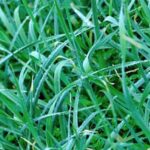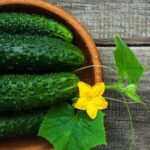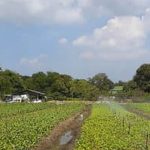Do vegetable gardens grow in the Flathead Valley, Montana? This question is on the minds of many aspiring gardeners who are considering planting their own vegetable patches in this picturesque region.
The Flathead Valley offers a unique and diverse agricultural landscape, with its own set of challenges and opportunities for vegetable gardening. In this article, we will delve into the climate, soil conditions, and best practices for successful vegetable gardening in the Flathead Valley, as well as provide valuable insights from local resources and experienced gardeners.
Situated in the northwest corner of Montana, the Flathead Valley is known for its breathtaking natural beauty, abundant wildlife, and fertile land. With its relatively short growing season and temperate climate, the region presents both advantages and obstacles for anyone looking to cultivate their own vegetable gardens. Understanding the specific nuances of the environment is crucial to making informed decisions about what to plant and how to care for it.
As we embark on this exploration of vegetable gardening in the Flathead Valley, we will consider factors such as climate patterns, soil composition, and local traditions that shape the area’s agricultural identity. By gaining a deeper understanding of these elements, gardeners can optimize their efforts and increase their chances of successfully growing a bountiful harvest.
So let’s dig into the rich soil of knowledge and uncover the secrets to thriving vegetable gardens in the heartland of Montana’s agricultural heritage.
The Climate and Soil Conditions of the Flathead Valley
Understanding the Climate
The Flathead Valley in Montana experiences a unique climate that presents both opportunities and challenges for vegetable gardeners. With cold winters and warm summers, gardeners must be strategic in their planting and harvesting to make the most of the growing season. Understanding the nuances of the local climate is essential for successful vegetable gardening in this region.
Optimizing Soil Conditions
The soil in the Flathead Valley is known for its rich fertility, making it an ideal area for vegetable gardening. However, it is important for gardeners to be aware of potential issues such as soil pH levels, drainage, and nutrient deficiencies. Conducting soil tests and implementing appropriate amendments can help optimize soil conditions for growing a wide variety of vegetables.
Adapting to Elevation Challenges
Due to its varying elevations, the Flathead Valley presents unique challenges for vegetable gardening. Higher elevations may have shorter growing seasons and cooler temperatures, while lower elevations may experience more heat and sun exposure. Gardeners must take these elevation differences into account when selecting plant varieties and planning their garden layouts. Additionally, being mindful of frost dates and microclimates can also contribute to successful vegetable gardening in this diverse landscape.
Understanding the climate and soil conditions of the Flathead Valley is crucial for anyone looking to start or maintain a vegetable garden in this Montana region. By recognizing these unique characteristics and adapting gardening practices accordingly, individuals can cultivate thriving gardens despite the challenges presented by the local environment.
Choosing the Right Vegetables for the Flathead Valley
When it comes to vegetable gardening in the Flathead Valley, it’s important to choose vegetables that thrive in the unique climate and soil conditions of this Montana region. The short growing season and cooler temperatures present specific challenges, but with the right selection of vegetables, successful gardening is definitely possible.
Cold-Hardy Vegetables
Given the cooler temperatures in the Flathead Valley, it’s essential to choose cold-hardy vegetables that can withstand frost. Some popular options include kale, broccoli, cauliflower, carrots, radishes, and various types of lettuce. These vegetables have a better chance of surviving sudden temperature drops and even light snowfall during the shoulder seasons.
Quick-Maturing Varieties
In a region with a shorter growing season, selecting quick-maturing vegetable varieties is also crucial. Look for vegetables like early-maturing tomatoes, bush beans, zucchini, and snap peas. These varieties have a better chance of reaching maturity before the first frost arrives in the fall.
Drought-Resistant Options
The Flathead Valley also experiences dry periods during the summer months. Choosing drought-resistant vegetables such as Swiss chard, beets, and certain types of onions can help ensure that your garden remains productive even during dry spells. Additionally herbaceous plants like rosemary complement well gardens not requiring too much water but appreciating well-drained soils.
By selecting a combination of cold-hardy, quick-maturing, and drought-resistant vegetables for your garden in the Flathead Valley, you can increase your chances of having a bountiful harvest despite the unique challenges presented by Montana’s climate.
Tips for Successful Vegetable Gardening in the Flathead Valley
The Flathead Valley, located in Montana, offers unique opportunities and challenges for vegetable gardening. With the right knowledge and techniques, gardeners can achieve great success in growing their own produce. From planting to harvesting, there are several key tips for successful vegetable gardening in this region.
First and foremost, it’s important to pay attention to the timing of planting. The short growing season in the Flathead Valley requires careful planning to ensure that vegetables have enough time to mature before the first frost. Consult a local gardening guide or agricultural extension office for specific recommendations on when to plant different types of vegetables.
In addition to timing, soil preparation is crucial for successful vegetable gardening in the Flathead Valley. Conduct a soil test to determine its pH level and nutrient content. Based on the results, amend the soil with organic matter such as compost or well-rotted manure. This will provide essential nutrients for healthy plant growth.
Proper watering is another important factor in successful vegetable gardening. The semi-arid climate of the Flathead Valley means that rainfall may not always be sufficient to meet the needs of vegetable plants. Consider installing a drip irrigation system or soaker hoses to deliver water directly to the root zone of plants, minimizing evaporation and ensuring efficient water usage.
| Tips for Successful Vegetable Gardening | Key Points |
|---|---|
| Timing of Planting | Consult local guides for optimal planting times. |
| Soil Preparation | Conduct a soil test and amend with organic matter. |
| Proper Watering | Consider drip irrigation or soaker hoses for efficient water usage. |
Local Resources for Gardeners
The Flathead Valley in Montana is home to a thriving community of gardeners who are passionate about cultivating their own vegetables. Fortunately, there are plenty of local resources available to support them in their gardening endeavors. Whether you’re a seasoned gardener or just starting out, the Flathead Valley offers a wealth of nurseries, seed exchanges, and community gardens to help you get started or expand your vegetable garden.
Local Resources for Gardeners in the Flathead Valley Include:
- Nurseries: The Flathead Valley is home to several nurseries that offer a wide variety of vegetable plants, seeds, and gardening supplies. These nurseries are staffed with knowledgeable experts who can provide advice on selecting the right plants for the local climate and soil conditions.
- Seed Exchanges: Many gardening enthusiasts in the Flathead Valley participate in seed exchanges, allowing them to trade seeds with one another. This practice not only promotes diversity in vegetable varieties but also fosters a sense of community among local gardeners.
- Community Gardens: For those without access to suitable land for gardening, community gardens provide an excellent alternative. These shared spaces allow individuals to rent plots and grow their own vegetables while also engaging with other members of the local gardening community.
Whether you’re looking for specific plant varieties, expert advice, or simply want to connect with other local gardeners, the Flathead Valley has abundant resources to support your vegetable gardening journey. By taking advantage of these resources, you can enhance your gardening experience and contribute to the vibrant culture of sustainable agriculture in Montana’s agricultural heartland.
Dealing With Challenges
Gardening in the Flathead Valley comes with its own set of challenges, including dealing with pests, unpredictable weather, and other potential obstacles. One common challenge faced by vegetable gardeners in this region is the presence of pests such as deer, groundhogs, and rabbits. These animals can often wreak havoc on a carefully cultivated garden, making it essential for gardeners to consider protective measures such as fences or repellents.
Additionally, the climate of the Flathead Valley can be quite variable, with the threat of late spring frosts or early fall freezes posing a risk to crops. Gardeners must remain vigilant and be prepared to protect their plants from sudden temperature drops.
Furthermore, another obstacle that gardeners may encounter in the Flathead Valley is the presence of specific soil conditions that may not be conducive to all types of vegetables. The region’s soil tends to have a lower pH level, which can affect the growth and development of certain plants.
As a result, gardeners should test their soil regularly and make necessary adjustments through proper fertilization and amending techniques. In addition to these challenges, weather patterns such as heavy rainfall or drought can also impact gardening efforts in the Flathead Valley.
Despite these challenges, many successful gardeners have found ways to overcome these obstacles through innovative solutions and careful planning. By choosing resilient plant varieties, implementing pest control strategies, and staying informed about local weather patterns, vegetable gardeners in the Flathead Valley are able to navigate through potential challenges while still enjoying fruitful harvests.
| Challenges | Solutions |
|---|---|
| Pests such as deer, groundhogs, and rabbits | Use of fences or repellents |
| Unpredictable weather including late spring frosts or early fall freezes | Remain vigilant; protect plants from sudden temperature changes |
| Specific soil conditions with lower pH levels | Regular testing; proper fertilization and amending techniques |
Success Stories
Gardening in the Flathead Valley can be a challenging yet rewarding endeavor. Many residents have taken up the task of growing their own vegetables, and their experiences provide valuable insight for those looking to start their own gardens. Here are some success stories from vegetable gardeners in the Flathead Valley:
- Tomatoes: One gardener, Sarah M. has had great success with growing various types of tomatoes in her backyard garden. She recommends starting with small tomato varieties such as cherry or grape tomatoes, as they tend to thrive in the shorter growing season of the Flathead Valley.
- Zucchini and Squash: Another local gardener, John D. has found that zucchini and squash grow exceptionally well in this region. He suggests planting these vegetables in mounds with plenty of organic matter to help retain moisture and keep the plants healthy.
- Root Vegetables: Jennifer P. has had luck with growing root vegetables like carrots and beets in her garden. She emphasizes the importance of maintaining well-drained soil for these crops, as they do not fare well in waterlogged conditions.
These success stories highlight the potential for thriving vegetable gardens in the Flathead Valley despite its unique climate and soil conditions. Learning from the experiences of other gardeners can provide valuable guidance for newcomers looking to establish their own successful vegetable gardens.
Whether it’s learning how to deal with pests or finding creative solutions to weather challenges, these real-life experiences offer practical advice for aspiring vegetable gardeners in the Flathead Valley. The passion and dedication of these local gardeners serve as an inspiring example for others who wish to embark on their own gardening journey in this Montana region.
The Future of Vegetable Gardening in the Flathead Valley
As vegetable gardening continues to grow in popularity in the Flathead Valley, the future of this practice looks promising. With a focus on sustainability and growth, gardeners in this Montana region are working towards creating a thriving and resilient agricultural landscape. By embracing organic and environmentally-friendly practices, the vegetable gardening community is contributing to the overall health and well-being of the Flathead Valley.
Sustainability is at the forefront of the future of vegetable gardening in the Flathead Valley. Many gardeners are adopting practices such as composting, water conservation, and natural pest control to minimize their environmental impact.
Additionally, there is a growing interest in heirloom and native plant varieties that are well-suited to the local climate and soil conditions. By prioritizing sustainability, gardeners are not only producing healthy and nutritious food but also preserving the natural resources of the Flathead Valley for future generations.
In line with the sustainable approach to vegetable gardening, there is also a focus on growth and expansion within the community. As more people become interested in growing their own food, there is an increasing network of local resources available to support them. Nurseries, seed exchanges, and community gardens provide opportunities for collaboration and knowledge-sharing among gardeners.
This sense of community engagement fosters growth not only in terms of the number of vegetable gardens but also in enriching the collective experience of gardening in the Flathead Valley. As we look ahead, it is clear that vegetable gardening will continue to play a significant role in shaping the agricultural heartland of Montana.
Frequently Asked Questions
What Vegetables Grow Good in Montana?
Many vegetables grow well in Montana’s climate, including carrots, potatoes, beets, kale, lettuce, spinach, and peas. These cold-hardy vegetables are well-suited to the shorter growing season and cooler temperatures of the region.
Is Montana a Good Place to Have a Garden?
Montana can be a good place to have a garden if you choose the right plants and take into consideration the local climate and soil conditions. With proper planning and care, it is possible to have a successful garden in Montana despite its relatively short growing season.
Can You Grow Crops on Montana?
While much of Montana’s land is used for grazing livestock, there are areas in the state where crops can be grown successfully. Wheat, barley, hay, dry beans, sugar beets, and canola are among the crops that can thrive in certain regions of Montana.
However, the challenging growing conditions such as arid climate and short growing season require careful selection of crops and farming practices.

If you’re looking to get into vegetable gardening, or are just looking for some tips on how to make your current garden better, then you’ve come to the right place! My name is Ethel and I have been gardening for years. In this blog, I’m going to share with you some of my best tips on how to create a successful vegetable garden.





